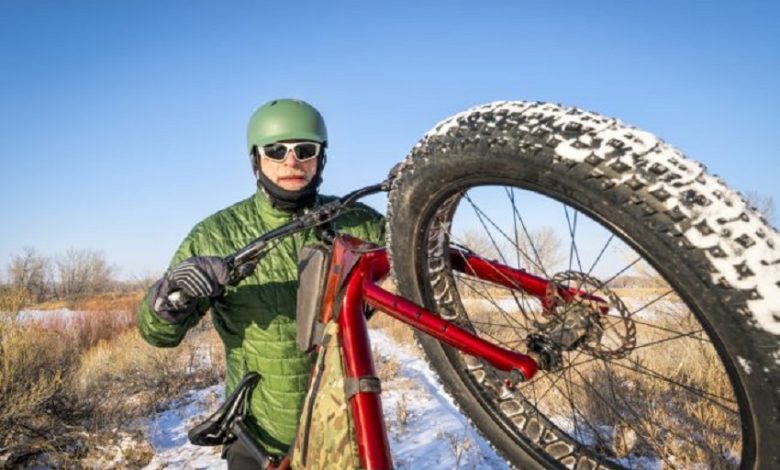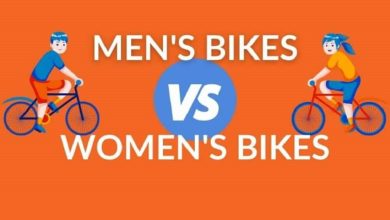What are fat bike tires for?

Fat bike tires are for your fat bike. You won’t find them on road bikes, mountain bikes, or even on BMX bikes. Fat bike tires are designed specifically for a fat bike and optimized for speed, traction, and control on the fat bike. In this article, we take a look at the different types of fat bike tires available today.
What are fat bike tires?
They are a way to improve your biking experience by increasing traction, comfort, and style. But it’s not as simple as just slapping some tires on the frame of your bike. Fat tire technology requires knowledge and preparation to make sure you get the best results possible.
There are four basic tire shapes that commonly produce the most traction and comfort with the least pressure: There is no set right or wrong fat bike wheel type. Everyone’s body, riding style, and habit vary enough to need different types of tires for their brand new Fat Bike. You can go through the best bmx bikes for beginners
Why You Should Buy A Fat Tire Bike
How does a fat bike differ from other bikes? One major difference is the amount of friction generated between tires and the ground surface. Another is due to the unique construction attributes discussed below:
Friction
Fatty tire, road tires have higher (higher rolling resistance) than Mtb, touring or city/trail free ride by design. Road wheels are built for speed rather than comfort, so all their compounds strive to even out traction in use which results in less rolling resistance.
Adhesives
Fat bike tubes require special adhesives that aren’t available for rims, road wheels, and mountain/touring bikes – (we don’t fully understand why). Reactive chemistry is the only means to get this glue-like consistency, but it takes at least a day or two in contact time before true adherence enhancements are realized. Hardening times increase with use, so you will definitely notice your performance improve with regular use.
Construction
Tubes are strong but have to unevenly flex in all directions due to their “cross-section” or shape. Fat tires need stiffer sidewalls and crowns implemented as you would extrude your bicycle material structure engineering tolerances allow for complete flexibility since no forming is required.
Increase comfort
With less contact between threads and ground, no lateral torques are created, which means you have greater control over each pedal stroke. This lessens fatigue and your feet will stay in contact with the pedals for longer periods of time.
Higher speeds
Greater rolling resistance means reduced spacing between drive train elements like gears, chainsets etc which results in greater efficiency to reach higher sustained (endurance) max speeds than other bikes are capable of reaching (less energy wasted as heat on frame/rims).
Increased Weight Limits
Riders who sit closer to the pegs experience a higher inertial load across their hips, pelvis, and knees than those further away from their center of gravity, but this is due to “posterior loading” usually only occurring when supported by your lower back area or third leg…not on a bike!
Better balance
If you are drawn to weight-carrying sports like mountaineering, rock climbing, or jumping acrobatics, then this may be your only game in town. Longer torsional rigidity means less flex at coupling points which will increase the amount of your body’s total mass you can lift for a period without failure!
Better handling
A bike that moves my body better / by moving myself and not other elements alongside me will be inherently more controllable (without pedaling) throughout a given gesture even when making fast lateral motions, as well as being much smoother in transition from one motion to another such as starting/stopping on stairs while trying to park.
Little maintenance
All maintenance should be done at home, with the exception that some can benefit from having a local bike mechanic perform them (dive bars, suspension tuning). There is no need to learn any new skills. Really, you will have probably learned all of this stuff while growing up on a standard hard-tail bike.
Things to consider while choosing a fat bike tire
Tire width: Wider (2.1″) tires will inherently provide plusher cushioning than narrower (1.8″) tires and offer a more comfortable ride, especially on rougher terrain or off-road in snow/ice.
Tire pressure: It is generally recommended to run your tire at about 35 PSI for optimal grip/braking performance, but this varies depending on the type of riding you do…for general use in all sorts of weather, I recommend running your tire at about 30 PSI.
Tire tread: As with helmet sizing, different brands work best in certain applications because they have a particular “chunkiness” to them ( ETC / YIKES )…some will give you more knobby traction while others are. Smoother and less noisy on the trail! Variety is also good expressly if you’re having trouble deciding which brand/version of said bike tire is best, especially if you are still new to the sport and trying different tires to get a feel for personal preference.
Tire Compound: Most brands will have very similar compounds, so there isn’t much point in looking into this, but I would just say it’s a generally good idea when thinking of buying your first fat bike tire because they generally come ready with casing (core) hardness which may differ from one brand/version of same tires to another – this may be obvious to some and not for all but this is a common element when specifying the tire based off of you bike setup.
Tire Width: With wide tires, your corners will tend to feel sketchy on rocks or steep terrain until you get used to the bike. That being said, I would consider it a bonus if sometimes felt as though you rode better over rough trails because there are more pounds per square inch.
Conclusion
Fat bike tires are not that different from regular road bike tires. In fact, they are essentially the same. However, fat bike tires do have a few notable differences that make them better suited for off-road riding. These include their larger contact patch and greater flexibility in turns. The wider contact patch is particularly useful on the trail as it helps disperse energy more effectively over a larger area of the tire, which is especially important when cornering or negotiating obstacles.
Keep Reading: What is the advantage of tubeless mountain bike tires?




